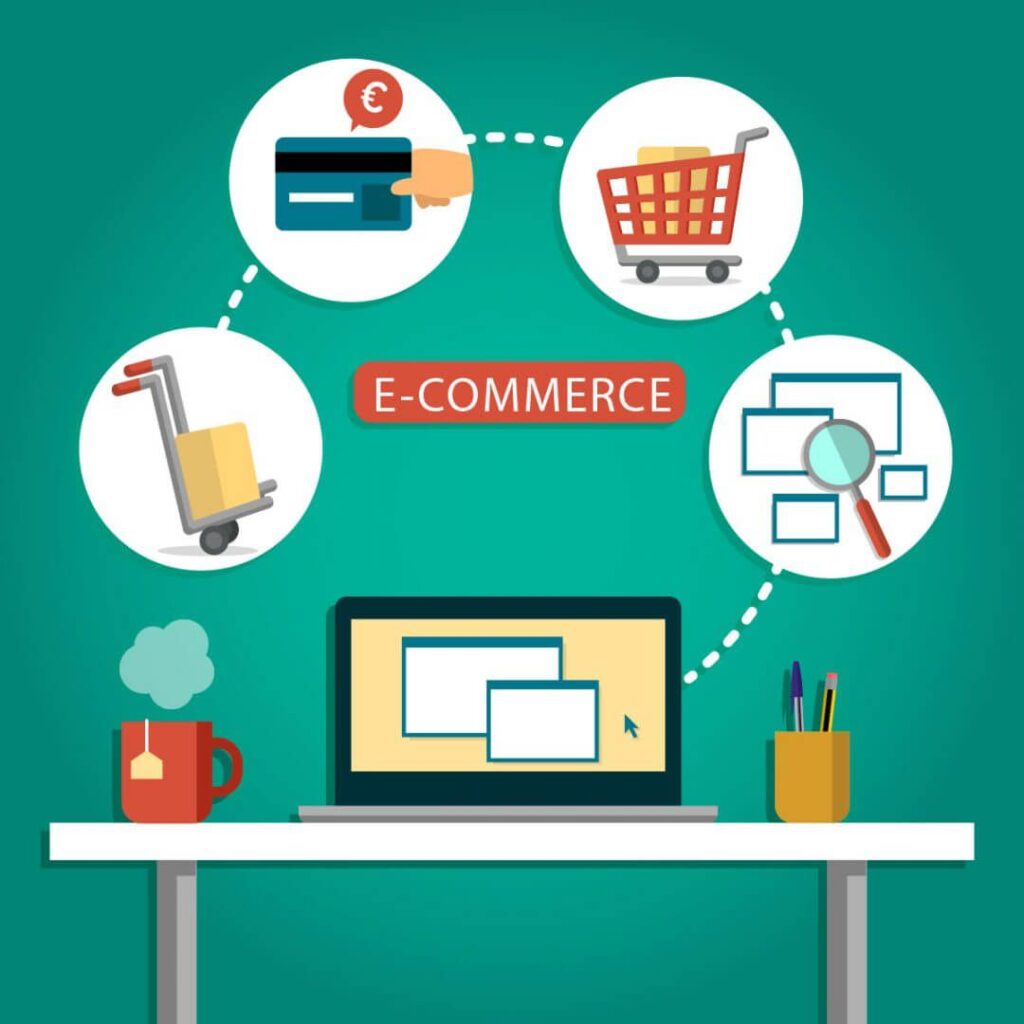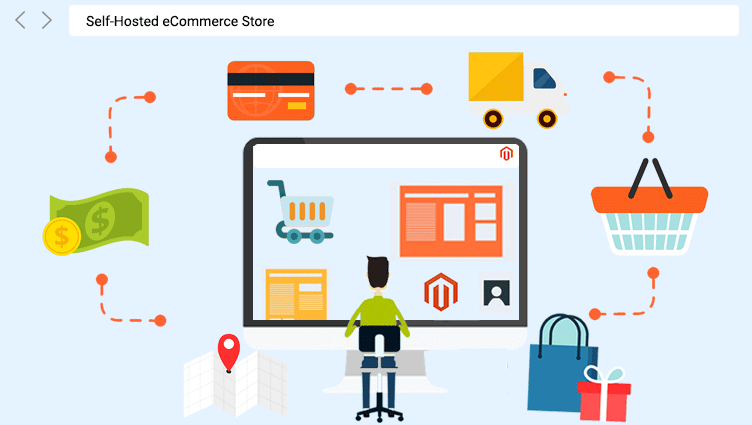Table of Contents

Introduction
The rise of E-Commerce has transformed the way we shop and has created a convenient and accessible way for people to purchase products and services. E-commerce refers to the buying and selling of goods and services over the internet. With the increasing popularity of e-commerce, there has never been a better time to start your online store.
E-commerce has revolutionized the way people shop, offering convenience and accessibility like never before. With the rise of online shopping, businesses must adapt to stay competitive in today’s digital landscape. From utilizing omnichannel strategies to implementing AI technologies, e-commerce offers numerous opportunities for growth and innovation. As consumers increasingly turn to online shopping, businesses have the chance to reach a wider customer base and achieve cost savings. Stay ahead of the curve and learn about the latest trends in e-commerce.
Whether you’re starting an e-commerce business from scratch or revamping your existing brick and mortar store, this ultimate guide will help you maximize your online sales and achieve your e-commerce goals.
- Choose the Right E-Commerce Platform
Your e-commerce platform is the backbone of your online store, and it’s essential to choose the right one for your business. There are several e-commerce platforms to choose from, including Shopify, Magento, WooCommerce, BigCommerce, and more.
Each platform has its own set of features and benefits, so it’s important to do your research and choose the platform that best fits your business needs. Consider factors such as the type of products you’re selling, your budget, and your technical expertise.
- Create an Engaging Website
Your website is your virtual storefront and the first point of contact with your customers. To maximize your online sales, it’s essential to create a website that’s visually appealing, user-friendly, and easy to navigate.
Make sure your website is mobile-responsive, as more and more people are shopping on their smartphones. Also, include high-quality product images and descriptions, as well as customer reviews, to help customers make informed purchasing decisions.
- Implement a Shopping Cart and Payment Gateway
A shopping cart and payment gateway are essential components of an e-commerce website. A shopping cart allows customers to add products to their cart and checkout when they’re ready to purchase.
When choosing a payment gateway, look for one that is secure, reliable, and easy to use. Popular payment gateways include PayPal, Stripe, and Authorize.net.
- Streamline Shipping and Fulfillment
Shipping and fulfillment are critical components of e-commerce. You need to be able to deliver products to customers in a timely and cost-effective manner.
Consider using a fulfillment service to handle shipping and order fulfillment for you. This can save you time and resources, and ensure that your customers receive their orders quickly and efficiently.
- Provide Excellent Customer Service
Customer service is crucial in e-commerce, as customers have a variety of options when it comes to shopping online. To maximize your online sales, it’s essential to provide excellent customer service, including responding to customer inquiries and concerns in a timely and professional manner.
- Invest in Online Marketing
Online marketing is essential for promoting your e-commerce business and reaching new customers. Consider using a variety of online marketing strategies, including search engine optimization (SEO), pay-per-click advertising (PPC), social media marketing, email marketing, and more.
- Improve Your Website Design
Your website is the first thing that potential customers will see when they find your online store. A well-designed website that is easy to navigate and visually appealing will help to build trust and encourage customers to explore your products.
When it comes to website design, there are several key factors to consider. Firstly, your website should be user-friendly and easy to navigate, so customers can quickly find what they’re looking for. Secondly, it should be visually appealing and professional, with high-quality images and a consistent brand message. Finally, your website should be optimized for both desktop and mobile devices, to ensure that it is accessible to all customers, no matter how they choose to browse your online store.
- Optimize Your Product Pages
Your product pages are the heart of your online store, and they need to be optimized to help you maximize your online sales. A well-designed product page should include detailed product descriptions, high-quality images, and customer reviews. Additionally, you should consider using videos and 360-degree product views to help customers get a better understanding of your products.
To optimize your product pages, you should also make sure that they are easily searchable by both customers and search engines. This can be done by using descriptive and keyword-rich product titles and descriptions, as well as by optimizing your product images with alt tags and file names.
- Implement a Marketing Strategy
Marketing is an essential part of any successful E-Commerce business. There are many different marketing channels that you can use to reach potential customers, including email marketing, social media, and paid advertising.
When it comes to email marketing, you should focus on building a strong email list and sending regular, targeted campaigns to your subscribers. For social media, you should focus on building a strong presence on platforms like Instagram, Facebook, and Twitter, and using these platforms to reach and engage with your target audience. Finally, paid advertising can be a powerful tool for reaching new customers and driving sales, but it’s important to choose the right platforms and target your campaigns effectively.
- Enhance the Customer Experience
The customer experience is one of the most important factors in maximizing your online sales. Your goal should be to make the customer journey as seamless and enjoyable as possible, from the moment they first visit your website to the moment they receive their order.
To enhance the customer experience, you should focus on providing excellent customer service, making the checkout process as easy and straightforward as possible, and offering flexible delivery options. You should also consider offering features like live chat and chatbots, to help customers get answers to their questions quickly and easily.
Current State of E-commerce
The e-commerce industry has grown significantly over the past few years and is projected to continue its upward trajectory in the future. Online retail sales are expected to reach $4.9 trillion by 2021, with a growth rate of over 10% each year. This growth is driven by the increasing use of mobile devices for online shopping, the convenience and accessibility of online marketplaces, and the improved customer experience offered by e-commerce businesses.

Future Trends in E-commerce
There are several key trends that are shaping the future of e-commerce, including:
- Omnichannel: The trend of seamless integration of online and offline channels to provide customers with a consistent shopping experience across all touchpoints.
- AI: The use of artificial intelligence in e-commerce to personalize the customer experience and automate various processes, such as product recommendations, chatbots, and fraud detection.
- Mobile commerce: The growing trend of customers using their mobile devices for online shopping, leading businesses to optimize their websites and apps for mobile.
- Customer data and privacy: The increasing importance of protecting customer data and maintaining privacy, as businesses collect and use more customer information.
Opportunities in E-commerce
The growth of e-commerce has created numerous opportunities for businesses, including:
- Reaching a wider customer base: E-commerce allows businesses to reach a global customer base, expanding their potential market.
- Cost savings: By avoiding physical store costs, e-commerce businesses can save on overhead costs and pass those savings on to customers in the form of lower prices.
- Better customer data: E-commerce provides businesses with detailed customer data, allowing them to understand their customers better and provide more personalized experiences.
Challenges
Despite the numerous benefits of e-commerce, there are also several challenges that businesses must overcome, including:
- Competition: With so many businesses now selling products online, competition is fierce and businesses must work to differentiate themselves and stand out.
- Shipping and logistics: Shipping and delivering products to customers can be complicated and costly, especially for businesses selling heavy or bulky products.
- Security and fraud: E-commerce businesses must protect their customers’ personal and financial information from theft and fraud.
- Privacy concerns: With increasing regulations around data privacy, businesses must ensure they are collecting and using customer data in a responsible and transparent manner.
Conclusion
In conclusion, e-commerce has come a long way and will continue to shape the future of retail. As customers increasingly turn to online shopping, businesses must stay ahead of the curve and embrace new technologies and trends to provide a seamless shopping experience. This includes investing in omnichannel strategies, utilizing AI to personalize the customer experience, and prioritizing the protection of customer data and privacy.
While there are challenges to overcome in the world of e-commerce, the opportunities for growth and innovation are vast. Businesses that are willing to adapt and evolve with the ever-changing landscape will be best positioned for success in the future. Whether it’s through optimizing for mobile devices, using customer data to personalize the shopping experience, or utilizing AI to automate processes, e-commerce offers a world of possibilities for businesses of all sizes.
As e-commerce continues to grow, it will be interesting to see how the industry evolves and how businesses can best leverage this growth to their advantage. The future of e-commerce is exciting and full of possibilities, and it will be exciting to see where it goes in the years to come.


